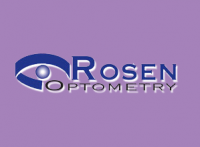Keeping Pace with the Latest Eye Exam Technology: OCT
Questions and Answers with Dr. Steven Rosen

Saint Louis, MO -- (ReleaseWire) -- 09/22/2014 --Ocular Coherence Tomography has been around for many years but the cost of the equipment and the advancements in the technology have now made it more accessible for optometry practices to have the technology readily available to patients.
OCT stands for Optical Coherence Tomography and it works similar to ultrasound but uses light instead of sound. OCT is used to image and measure the tissue structures of the eye. The OCT can create cross sectional and 3D views of the macula, the optic nerve, and other areas of the retina. It can also image the cornea. “By getting extreme close-ups of ocular tissue, we can detect disease earlier and take the appropriate measures to deal with it,” stated Dr. Steven Rosen of Rosen Optometry who has the OCT device in his South St. Louis practice. “In addition to better views, the OCT can measure thicknesses, and compare these measurements with norms that have been established which can also be used to differentiate disease from normal.”
The OCT is useful in diagnosing and following glaucoma, borderline glaucoma, dry and wet macular degeneration, macular edema, diabetic macular edema, optic nerve edema, vitreous detachment, retinal detachment, retinal layer separation, and macular holes. It is also useful in diagnosing and following corneal dystrophies such as keratoconus as well as working with complicated contact lens cases.
“I have spent my entire career managing conditions by looking at the overall clinical picture,” reported Dr. Rosen. “This hasn't changed, but with this technology, it is possible to see the structures involved which has deepened my understanding of how these conditions progress and affect vision.” The OCT helps clinicians make better clinical decisions such as when it is best to treat or refer a patient at an early stage and when it is fine to avoid a treatment in favor of continued monitoring.
“We chose the RTVue from Optovue because Optovue has always been the recognized leader in this field,” commented Dr. Rosen. “The RTVue has advanced Glaucoma detection abilities by not only testing around the optic nerve but by measuring an even earlier indicator found in the macula. It has impressive imaging abilities due to its resolving power down to 5 microns.” The instrument also offers anterior/corneal imaging in addition to retinal/optic nerve imaging.
Having an OCT test is very simple. The patient places their chin onto a chinrest and is instructed to look at a blue light. In a few seconds, the OCT gets all the images needed. The OCT can accomplish 26,000 scans each second.
OCT is utilized to run a screening scans for glaucoma and macular degeneration, but usually the OCT is used if a condition is known or suspected. OCT is recommended for patients with glaucoma or when we suspect glaucoma, when a patient has dry macular degeneration, and especially when a patient has diabetes. It is also used if a patient has poor vision that cannot be explained by cataracts or helped by changing their eyeglasses.
“Patients appreciate that our practice stays up to date with modern technology, stated Dr. Rosen. “They understand that newer instrumentation allows for more exactness in their care.”
Media Relations Contact
Daniel Rostenne
314-843-2020
http://www.rosenoptometry.com/
View this press release online at: http://rwire.com/544796